Wildflowers for Bees: Why They Matter
Bees depend on flowers for survival. Thousands of wildflowers support bees by providing nectar and pollen. Wildflowers of many different types help fill in nectar gaps – providing season long food and cover. Many occur naturally in the landscape. But, you can help by planting bee friendly wildflowers in your gardens. In this guide, you will see some of my favorites that provide beautiful color and bee food!

Bee populations have been declining in recent years and habitat loss has not helped. When you choose to plant flowers that bees love it is a positive step in the right direction.
Top Bee-Friendly Wildflowers
Some wildflowers are naturally more attractive to bees and other pollinators. Perhaps, their nectar is sweeter, they bloom at a certain time or bees just like the color.
When choosing plants, keep in mind that your climate or region plays an important role too. Your goal should be to compliment what is already naturally available.
Here is a list of some of the most notable specimens that bees visit and are relatively easy for anyone to grow.

1. Bluebell (Hyacinthoides non-scripta)
Bluebells have bell shaped flowers that are usually deep blue to violet. But, they can be white or pink. The plant grows from a bulb.
Very fragrant blooms appear from mid April to late May. Best growing conditions are bright woodlands, open fields or along hedgerows.

2. Cowslip (Primula veris)
This herbaceous perennial is a member of the primrose family. An early Spring bloomer, it is often found growing in shady locations. But, it can do well in open pastures also.
The yellow flowers are actually quite pretty and have a nice fragrance. Cowslip is actual one of many herbs that feed bees. They do self seed but are not obnoxious about it – you should be able to control them.

3. Dandelion (Taraxacum officinale)
Native to parts of Europe, dandelions can be found in many parts of the world. They provide both pollen and nectar when bees come out in Spring to forage on cool spring days.
While they do not provide a complete nutritional diet for honey bees, dandelions feed bees at a crucial time of year. And, they are so hardy they can bloom in less than perfect conditions.

4. Eastern Red Columbine (Aquilegia canadensis)
A tall perennial, Eastern Red Columbine likes full sun to half shade. The red flowers appear on up to 24” tall stems – native to most regions of the US – likes dry to average soil.
This can be an aggressive grower so see your nursery man for advice on the best location to plant.

5. Foxglove (Digitalis purpurea)
Foxglove is a hardy biennial that is especially attractive to long tongued bees but honey bees will also work the blooms. It will do okay in shade but really thrives in a full sun location.
I try to limit deep flowers in my garden – when planting for honey bees but these are beautiful and humming birds love them. Hey, maybe they can help keep bees off the hummingbird feeders?
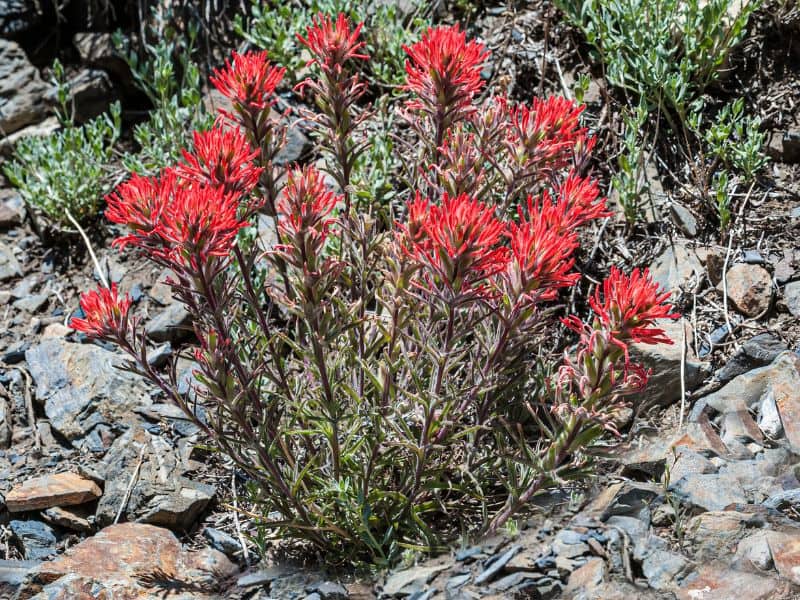
6. Indian Paintbrush (Orobanchaceae)
Indian Paintbrush is a member of the broomrape family. Also called “painted cup” it is attractive to a variety of insects – including wild bees.
Can be found in most eastern states of U.S. You can find both perennial and annual varieties. A biennial species, they bloom the second season.
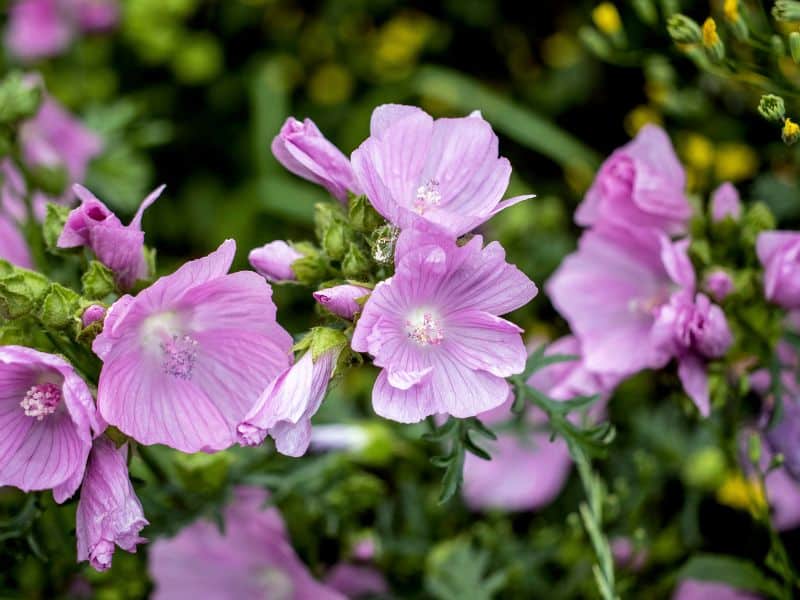
7.Musk mallow (Malva moschata)
Musk mallow is a perennial wildflower that is native to England. However, it is a favorite for cottage gardens. It does well in dry soil and is very attractive to bees.
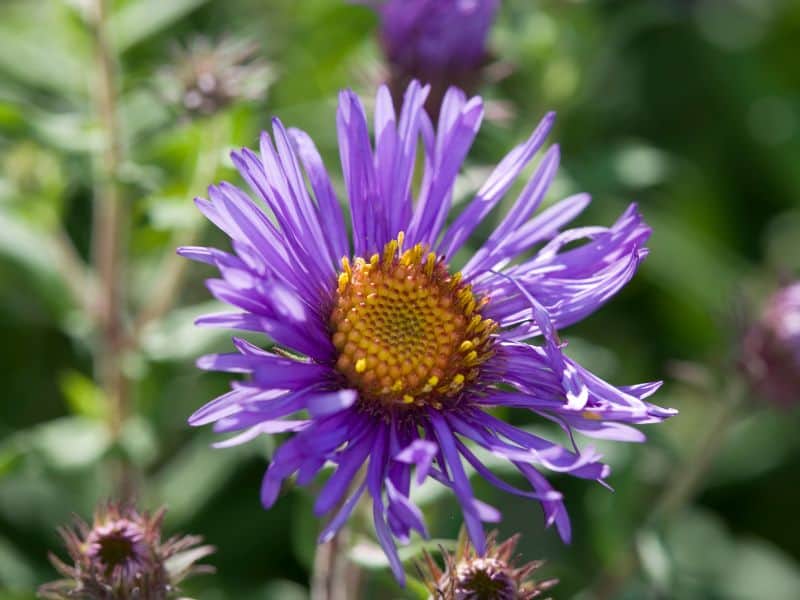
8. New England Aster (Aster novae-angliae)
This aster grows well in most areas of the country. Lavender-pink blooms appear on plants up to 6 feet tall. Performs well in most soil types and full sun to partial shade.
A late season bloomer it is attractive to bees birds, butterflies and is deer resistant. Food sources late in the season as especially important to honey bee colonies getting ready for Winter.

9. Oxeye Daisy (Leucanthemum vulgare)
This herbaceous perennial grows from 1 – 3 feet tall with beautiful white daisy flowers. One plant can have up to 40 flowering stems.
They bloom all Summer. Plants produce a lot of seed and spread by rhizomes too. Considered invasive in some areas-check with local nursery for more info.
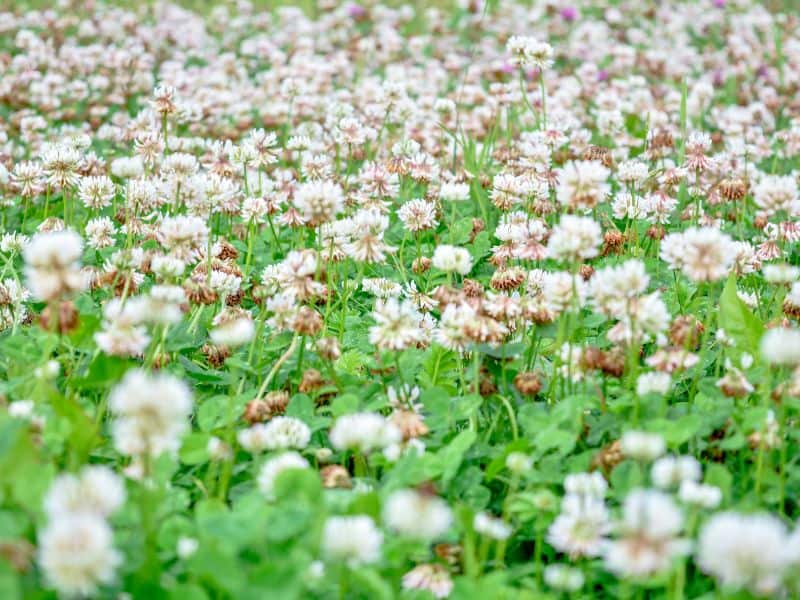
10. White Clover (Trifolium repens)
There are many species of clover for bees. However, White Clover is one of the most noticeable. It grows well in most regions of the United States but performs better in the cooler areas.
Many southern backyard find honey bee visiting on warm afternoons. I think my first experience with honey bees was from running barefoot through the yard – ouch.
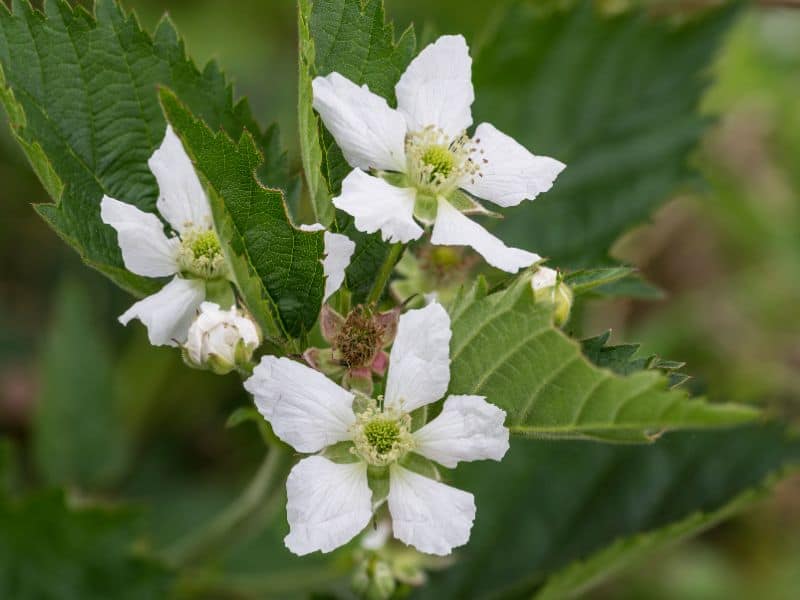
11. Wild Blackberry (Rubus allegheniensis)
The beautiful white blossoms of blackberries dot my local roadsides each Spring. There are many different species of blackberries found in North America.
In some areas, they are important honey plants that produce a lot of nectar – maybe even enough to produce a honey crop.
In other regions, they are largely ignored by honey bees. Possibly due to the fact that other plants bloom at the same time and are more attractive. Plant this wildflower for bees and reap the rewards of fresh berries.

12. Coreopsis (Tickseed)
The Coreopsis group consists of about 80 different varieties of plants. Some are perennial – some are annuals. This perennial clump graces my beds with a large mound of blooms each year.
One of the most endearing things about it – is the long bloom time. It provides weeks of valuable pollinator food and returns year after year.
How Planting Wildflowers Boosts Bee Forage
Whether you are planting a major bee garden, or just wanting to add some color to your yard – native wildflowers can be a great addition. Keep these tips in mind:
- native plants are more adaptable to your climate
- mix and overlap bloom times
- include a variety of plants for a diverse food source
Wildflowers that are native to your growing area will likely grow better and produce more bee food. They are more suited to the growing conditions (soil, climate etc) than developed hybrids.
Take note of what is blooming in your area, add plants that bloom at different times – or all season. Consider times of the year that are especially lacking in rainfall – drought tolerant pollinator flowers are perfect.
Honey bees and native solitary bees benefit from a diverse food source. Different types of nectar and pollen makes for a healthy diet. Mass plantings are great but try to include different plants when you can.

Wildflowers are a viable nectar source for honey production in some regions – making them top honey plants. It is not uncommon for large scale beekeepers to plant fields of wildflowers – or to move their bees close to existing fields.
No matter where you live in the United States, there are likely some bee friendly wildflowers around already.
Key Points
- include a variety of flower types
- avoid invasive wildflowers
- even small spaces can make a difference
Include different colors and shaped blooms in your honey bee wildflower garden. This diversity provides the most nutrition for bees.
Native wildflowers are great but invasive exotic species can be a problem. For example, Knapweed is a good bee food source but very invasive in some areas. In general, invasive plants are not good for bees – even if they do provide food.
Even a small area or a collection of pots or containers of bee friendly plants can contribute food for beneficial insects.
FAQs
Learn about local wildflowers through online guides, books, native plant societies in your area or local agriculture agencies.
Some flowers work well for all bee species. Others are better suited for pollinators with a longer tongue. Plant a variety of flower types for best results.
Some common mistakes are choosing the wrong plants for your growing conditions, using pesticides that kill or harm visiting bees and accidently choosing an invasive species.
Final Thoughts
Planting wildflowers for bees isn’t just a way to add natural beauty to your landscape—it’s one of the most meaningful actions you can take to support honey bees and other pollinators. While many of these plants grow naturally in fields and roadsides, intentionally planting them in gardens, pastures, or along property edges helps supplement the natural forage bees depend on, especially as wild habitats decline.

